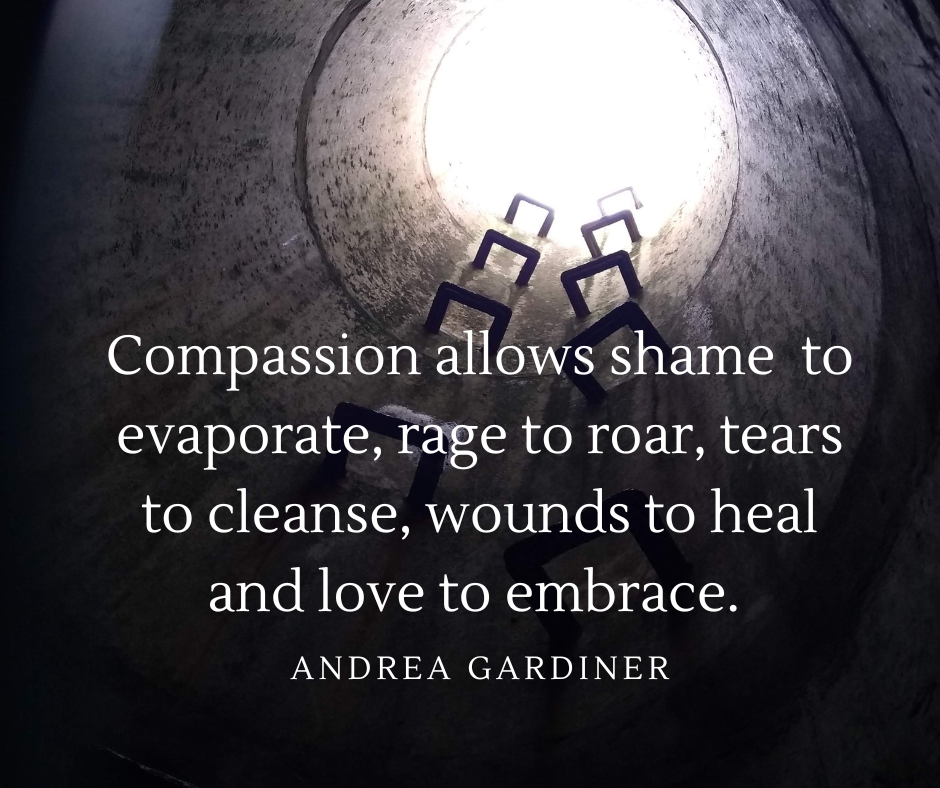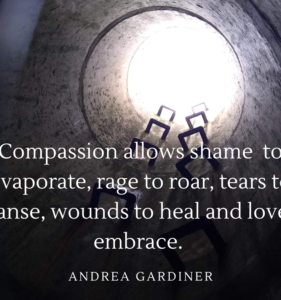Whether we want to recognise if someone is a safe listener, or whether we desire to be a good listener for others, understanding pity, sympathy, empathy and compassion is crucial.
Telling our stories is an integral part of our healing. The response we receive makes a huge difference to whether the experience is another step on our journey, or a re-traumatisation. The way we listen has the power to heal or to wound.
There are big differences between empathy, sympathy and pity. They evoke very distinct emotions in the person receiving them.
Suppose my hamster died, and I am feeling sad. Pity says, “Oh poor you. I would never buy a hamster. They never live long.”
Sympathy says, “I’m sorry your hamster died. That must feel terrible.”
Empathy says, “How are you feeling? Tell me what happened. I understand the grief of losing a pet. Hey, we don’t have to go to that party tonight if you’re not feeling like partying. I could hang out here with you instead and we could just watch a movie? What feels best for you?”
Notice the distance that both pity and sympathy create. Pity places itself as superior to the suffering person. It affirms and gratifies itself. Brene Brown writes, “Pity involves four elements: a belief that the suffering person is inferior; a passive, self-focused reaction that does not include providing help; a desire to maintain emotional distance; and avoidance of sharing in the other person’s suffering.”
Now, imagine how that reaction feels to the survivor of sexual abuse. Pity says, “Poor you! I have thankfully never experienced that. Don’t worry, I won’t tell anyone. It’s best not to dwell on these things. Look to the future.” Pity reaffirms the survivor’s belief that the abuse was their own fault and that there is something wrong with them. It reinforces shame. It silences. It wants to avoid hearing the story, feeling the emotions, and seeing the tears.
Sympathy also places itself at a safe distance from the suffering. It says, “I’m sorry that happened to you. I’m sorry you are struggling. I’m sorry you are unwell. It must be awful. I hope you find some help, you poor thing.” There is a hierarchy here. Brene Brown comments, “rather than conveying the powerful “me too” of empathy, it communicates “not me”.” Sympathy believes it is in a place where such suffering does not happen. Without realising it, sympathy is actually functioning to keep the person hearing the story comfortable, not to alleviate the discomfort of the suffering person.
Again, it often results in the shame. The suffering person feels unheard and belittled.
Empathy is not imagining how it would be if such an experience happened to me. It is not putting myself in someone else’s shoes. We all come to our lives with varying identities and privileges.
A friend once told me how she felt as a woman of colour on a bus, when people got on and never took the seat next to her. As she had experienced racism in the past, she assumed the people were avoiding her due to the colour of her skin, and felt isolated and dehumanised.
If I imagine myself on the same bus, experiencing strangers choosing not to sit next to me, I would not have the same emotions. I would not assume it is due to racism. As a reserved Brit, I might feel relief for example!
Empathy here would be recognising that I too have felt isolated and dehumanised sometimes. I can listen to how the experience felt to her and affirm I have understood her emotions.
Brene Brown explains that in her research she found empathy listens to how the experience felt to the storyteller. It does not judge. It recognises that we too have felt those same emotions and reflects that back to the storyteller. It allows the expression of the emotion and is willing to accompany the storyteller, witnessing and present to their pain.
I have found that becoming a more compassionate, empathetic person has required me to process my own trauma. While I was denying my own suffering and repressing my own emotions, I listened to others in a defensive mode. I needed to protect myself from their suffering and emotions. I was afraid. I believed that if I opened the door on my own emotions, I would totally fall apart. So, I had to keep my distance from the suffering and emotions of others.
Facing my own past, unleashing the floodgates of emotions and debris stacked up, pressing against the dam, released me. It was not my undoing, but my rebirth. I started me on the journey of living life with self-compassion.
Once I could be compassionate to myself, and my own suffering, and experience my own emotions without fear, I could do this for others authentically. I did not need to distance myself anymore.
I can now recognise our common humanity. I am no longer afraid that I will not be able to handle the emotions evoked in myself or the storyteller, so I can sit and listen to their stories, without judgement, accepting them and their story as they are. I have not had the same experiences as them, but I have experienced the same emotions, and can therefore sit with them in solidarity and understanding. Supressing emotions leads to depression. Allowing them to be expressed is part of the healing journey.
I now understand that compassion is not offering a solution or trying to fix things. Nor is it telling someone it was not that bad, or not as bad as something someone else experienced. It is asking what support is helpful to them in that moment. It is empowering them to make their own choices about the way forward. It is recognising that some experiences can only be grieved. They can never be fixed or changed.
Compassion understands that a suffering person needs a companion willing to sit in the darkness with them, as their witness and friend. I had to face and experience my own suffering, to find the courage to be that companion. It is by going through the darkness ourselves, and finding the light within us, that we know that there is hope for everyone else as well.
There is great beauty to be found in those moments where we are able to receive someone else’s story with empathy and compassion. Shame evaporates. Rage roars. Cleansing tears flow. Wounds begin to heal. Peace is found in acceptance and release. Love embraces. Rays of sunlight beckon towards the future.



Pingback: Listen by Kathryn Mannix – A Book Review - returning home to yourself
So well written.
I would add that I am grateful to those whom I have walked alongside for their understanding that sometimes I do or say the wrong thing. I know that at times I let friends down by not engaging fully, misreading the signs, rushing in with comments which are not helpful…. no empathy is perfect. Also it is rare for empathy to only be one way. True friendship goes through seasons of one person needing more loving care, then the reverse when life changes. Learning to receive a truly listening caring heart is also key.
Are some people born with a tendency to be empathetic? I believe it is a gift although it can be learned and improved. And having that gift brings responsibility to use it well.
Thank you for your thoughts Hilary. Yes we are imperfect humans and our ability to show empathy is also imperfect. How precious are those friendships where empathy is given and received in different seasons. Life giving!
Pingback: Is our happiness important? - returning home to yourself